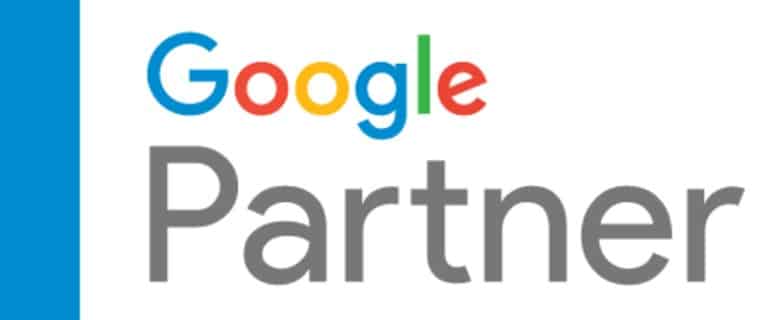The Secret Weapon Every Business Needs: Conversion Optimization
As a business owner, you want more, right?
Most businesses want more website traffic, more leads, more calls, more customers and most importantly, more money.
There are two essential ways to accomplish this. First, you can run various types of marketing campaigns including things like SEO, Google Adwords Campaigns, and social media marketing to put your website in front of more people. These marketing elements are typically a strong way to pull in more customers.
Another way to get more is to do conversion optimization which doesn’t bring you more traffic. It simply helps convert more website visitors into actual leads.
What is conversion optimization?
Conversion optimization is the process of improving your website or landing page to increase the percentage of visitors who take a desired action, such as making a purchase, signing up for a newsletter, or filling out a contact form. This is achieved by making changes to your website’s design, content, and user experience to encourage more visitors to convert into customers or leads. It involves analyzing user behavior, testing different elements, and making data-driven decisions to maximize your website’s effectiveness in turning visitors into customers.
A simpler way to think about conversion rate optimization or CRO is that it’s a way of taking your website to the laboratory and constantly testing it to see what works with your website visitors and what doesn’t.
From there, you keep testing to get more.
Taking your website to the lab
In the 20 years we’ve been in business, the staff at Make It Loud has seen a lot of bad websites. Let’s be honest, if your target customer comes to your website and sees an old, outdated website that looks horrible on the phone and doesn’t provide what they’re looking for, that person simply moves on to find what they want.
Conversion rate optimization helps prevent all that by establishing a baseline rate of conversion and testing whatever might improve that rate.
A fair question here might be, “What would I test?”
The answer is, “Everything!”
From the color of your call to action buttons (CTAs) to the images and text on your page, everything is fair game to run A/B tests.
Remember back in school when you read about all the science experiments where they did one thing to group A and another thing to group B to see which group responded better? Well, this is the same thing only now, it’s to test what makes your business the most money.
Specific examples of things to test
Here are some ideas of things you can test to see which elements might help convert more website visitors into actual customers:
- The color or text on your CTA buttons
- The hero images on your home page
- Your initial text in the hero section
- Benefit driven CTAs (i.e. instead of “Call Now”, try “Get More Customers”)
- Color schemes
- Layouts
In actuality, you can test literally ever element on your website. The only caveat is that for each A/B test you run, you can only test one element at a time. Otherwise you will skew the results and you won’t know which element visitors found more attractive.
Why is conversion optimization important for your business?
Conversion optimization is important for your business because it helps improve the efficiency of your website in turning visitors into customers. By optimizing your conversion rate, you can increase the number of leads and sales, ultimately leading to higher revenue. It allows you to understand user behavior, identify areas for improvement, and implement changes to enhance the user experience and drive more conversions. This can be crucial for the growth and success of your business, as it directly impacts your bottom line.
Understanding the conversion funnel
The conversion funnel is a crucial aspect of understanding how to turn website visitors into customers. It involves the process of guiding potential customers through the stages of awareness, interest, decision, and action. Here’s a breakdown of the stages:
- Awareness: This is the initial stage where potential customers become aware of your products or services.
- Interest: Once aware, the customers show interest in what you offer and consider exploring further.
- Decision: At this stage, the customers are in the process of making a decision to purchase your product or service.
- Action: This is the final stage where customers take the desired action, whether it’s making a purchase, signing up for a newsletter, or any other conversion goal.
Understanding and optimizing each stage of the conversion funnel can significantly impact the success of your business.
Identifying and analyzing conversion bottlenecks
Conversion bottlenecks are the specific points in your sales funnel where potential customers are dropping off, leading to fewer conversions. To identify and analyze these bottlenecks, you can use tools like Google Analytics and heatmaps to see where users are getting stuck or leaving your website. Additionally, conducting user surveys and A/B testing can provide valuable insight into what might be hindering conversions. By pinpointing these bottlenecks, you can make targeted improvements to your website or sales process, ultimately boosting your conversion rates.
Implementing A/B testing and other optimization strategies
To improve your website’s performance, A/B testing and other optimization strategies can be implemented. By comparing different versions of a webpage, A/B testing helps determine which version generates more conversions. This optimization technique allows you to make data-driven decisions to improve your website’s effectiveness in converting visitors into customers.
The way this works is fairly straightforward. You’ll need to use CRO testing tools to create 2 different versions of the page you are testing. You simply decide what you’re going to test, so let’s say for example you are testing whether the red CTA button converts more than the green button. Each versions of the page are the exact same with only that difference.
From there, you set up the test to send half your website traffic to version A and the other half to version B. You let the test run long enough to gather enough data and measure the outcome.
The role of user experience in conversion optimization
User experience plays a crucial role in conversion optimization. It encompasses the overall experience a person has while interacting with your website or product. Incorporating a seamless and intuitive user experience can significantly impact the likelihood of a visitor taking the desired action, such as making a purchase or signing up for a newsletter. The key aspects of user experience, including navigation, layout, and content presentation, directly influence how effectively you can convert visitors into customers.
Leveraging data and analytics for optimization
Utilizing data and analytics can provide valuable insights into customer behavior and preferences. By analyzing this information, businesses can identify areas for improvement and optimize their conversion rates.
Data-driven decision-making enables businesses to tailor their strategies to better meet the needs and desires of their target audience. Additionally, tracking and analyzing key metrics can help businesses understand where their conversion process may be falling short and identify opportunities for enhancement. Leveraging data and analytics is essential for businesses to continually optimize their conversion strategies and improve their overall performance.
Optimizing for different devices and channels
When optimizing for different devices and channels, it’s important to ensure that your website or content is easily accessible and user-friendly across various platforms. This means making sure that your website loads quickly on mobile devices, is easy to navigate on both desktop and mobile, and is optimized for different screen sizes.
Additionally, you’ll want to consider the different channels through which your audience accesses your content, such as social media, email, and search engines. Tailoring your content to fit the unique requirements of each channel can help improve engagement and conversion rates.
Balancing conversion optimization with user satisfaction
Conversion optimization is essential for increasing your business’s revenue and success. However, it’s equally important to ensure that your customers are satisfied with their experience on your website.
Balancing conversion optimization with user satisfaction involves focusing on improving conversion rates while still providing a positive and seamless user experience. This means using tactics such as A/B testing, optimizing call-to-action buttons, and streamlining the checkout process, all while considering the usability and satisfaction of your website visitors. Achieving this balance will lead to sustainable growth and customer loyalty for your business.
Measuring and evaluating the success of your conversion optimization efforts
Measuring and evaluating the success of your conversion optimization efforts is crucial to understanding how well your strategies are working. It involves analyzing data and key performance indicators to determine the impact of your optimization efforts. By tracking metrics such as conversion rates, click-through rates, and bounce rates, you can identify areas for improvement and make informed decisions to enhance your conversion optimization strategies. Regularly monitoring and assessing these metrics will help you gauge the effectiveness of your efforts and make necessary adjustments to improve your business’s conversion rate.
If you would like help getting more from your website, call 678.325.4007 and talk to the experienced staff at Make It Loud. We have one job- to put more money into your pocket. That’s all that matters to us.
Cliff Tillery, MBA is the Chief Operating Officer and SEO Director at Make It Loud which is a digital marketing firm located outside of Atlanta Georgia. More than 14 years ago, he started search engine optimization at this award-winning agency and has taught digital marketing skills to business owners at the Gwinnett Chamber of Commerce, the Gwinnett Entrepreneur Center, and other groups.


